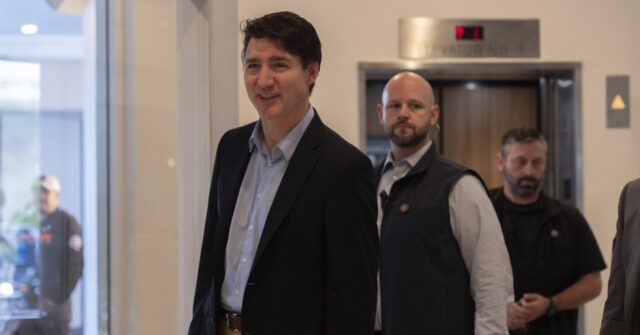Canadian Prime Minister Justin Trudeau is set to convene a meeting with opposition leaders to address critical U.S.-Canada relations following recent threats from U.S. President-elect Donald Trump. The imminent discussions are particularly crucial given Trump’s alarming proposal to levy substantial tariffs on all Canadian goods. This meeting is presumed to take place early Wednesday afternoon, according to anonymous sources with inside knowledge of the plans. The urgency stems from the economic implications of such tariffs, which would impact one of Canada’s largest trading partners, jeopardizing many sectors reliant on cross-border trade.
Trudeau’s political landscape is notably more precarious than during Trump’s first term, as he now leads a minority government and faces an election within the next year. During Trump’s previous presidency, Trudeau effectively utilized a “Team Canada” strategy to navigate renegotiations of the North American Free Trade Agreement (NAFTA). However, the current climate poses new challenges as Trudeau has returned from discussions with Trump at Mar-a-Lago without any definitive reassurances that the proposed tariffs will be reconsidered. Trump has suggested he may impose a 25 percent tax on all products entering the U.S. from Canada and Mexico unless both countries take action to curb the influx of migrants and drugs.
In a meeting described as “productive,” Trump remained steadfast in his tariff intentions despite Trudeau’s attempts to delineate the differences between the Canadian and Mexican borders. This clarification is pivotal given that Canada is often painted with the same brush as Mexico in Trump’s policies, especially regarding issues like immigration and drug trafficking. Trudeau’s administration contends that Canada should not be grouped with Mexico when discussing these topics since the dynamics at their respective borders are distinct. Canada is classified as a highly trade-dependent nation, with approximately 77 percent of its exports directed toward the United States.
Canada’s ambassador to the U.S., Kirsten Hillman, emphasized the importance of this distinction, citing a comparison of drug seizures at both borders. In the previous fiscal year, the U.S. border patrol reported a minuscule amount of fentanyl, just 43 pounds, seized at the Canadian border versus an overwhelming 21,100 pounds taken at the Mexican border. The majority of the fentanyl reaching the U.S. is produced by Mexican drug cartels, showcasing the stark differences in illegal activities associated with each country. Furthermore, the U.S. Border Patrol documented over 1.5 million encounters with irregular migrants at the southern border with Mexico compared to a mere 23,721 at the Canadian border within the same timeframe.
The economic stakes are high for both countries. Canada is the primary export destination for 36 states in the U.S., with approximately $3.6 billion Canadian (or US$2.7 billion) worth of goods flowing across the border daily. A significant portion of U.S. energy imports comes from Canada, accounting for about 60 percent of crude oil and 85 percent of electricity imports. Moreover, Canada stands as a vital supplier of raw materials to the U.S., furnishing steel, aluminum, uranium, and 34 critical minerals essential for national security and military supply chains.
In summary, the upcoming discussions between Trudeau and opposition leaders are poised to shape the future of U.S.-Canada relations amidst turbulent trade threats from the incoming U.S. administration. With a diverse and interdependent economic relationship, both countries will need to navigate carefully to mitigate potential fallout from Trump’s proposed tariffs while addressing the overarching issues of border security and immigration. The nuances of this relationship, especially in contrast to Mexico, will be crucial for Canada to leverage as it aims to safeguard its economic interests while maintaining strong ties with its southern neighbor.

